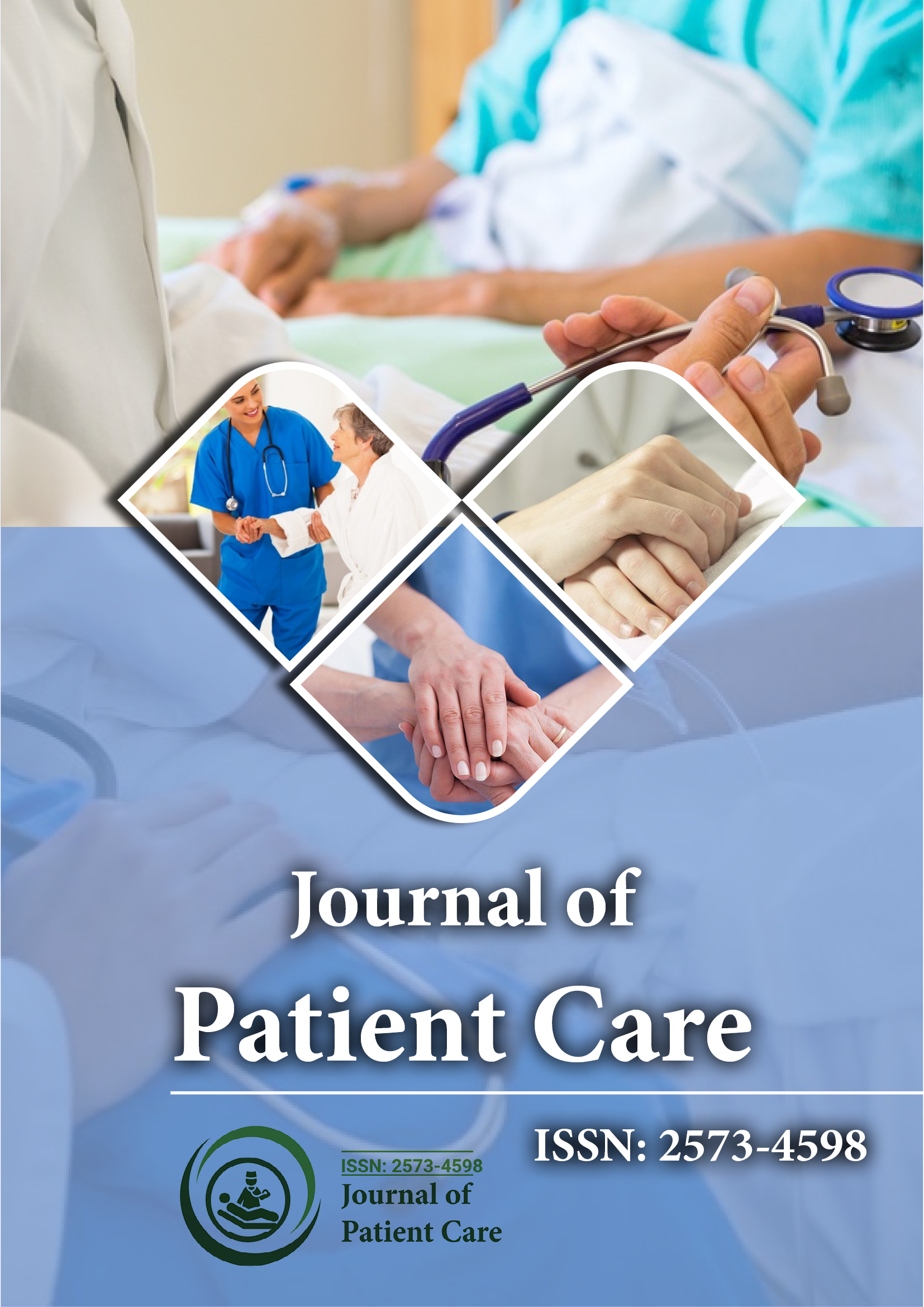Indexed In
- RefSeek
- Hamdard University
- EBSCO A-Z
- Publons
- Geneva Foundation for Medical Education and Research
- Euro Pub
- Google Scholar
Useful Links
Share This Page
Journal Flyer

Open Access Journals
- Agri and Aquaculture
- Biochemistry
- Bioinformatics & Systems Biology
- Business & Management
- Chemistry
- Clinical Sciences
- Engineering
- Food & Nutrition
- General Science
- Genetics & Molecular Biology
- Immunology & Microbiology
- Medical Sciences
- Neuroscience & Psychology
- Nursing & Health Care
- Pharmaceutical Sciences
Commentary - (2022) Volume 8, Issue 5
Treatment of Joint Disorders in the Senior Population
Michael Smith*Received: 29-Aug-2022, Manuscript No. JPC-22-18393; Editor assigned: 02-Sep-2022, Pre QC No. JPC-22-18393 (PQ); Reviewed: 19-Sep-2022, QC No. JPC-22-18393; Revised: 23-Sep-2022, Manuscript No. JPC-22-18393 (R); Published: 30-Sep-2022, DOI: 10.35248/2573-4598.22.8.198
Description
Aging brings about a lot of changes. Joint discomfort is one of the most typical concerns hear from seniors. Sometimes it is a problem that the elderly are aware of, such arthritis or osteoporosis that has been diagnosed. Other times, a simple change in the weather seems to be enough to start the discomfort. Although it is true that muscle degradation, bone loss, and balance issues worsen with age, a sore back, creaky knees, and tight ankles are not always a normal aspect of growing older. These symptoms can be the result of a medically treatable ailment or risk. Because the volume of synovial fluid inside the synovial joints decreases with age and the cartilage thins, joint movements become stiffer and less flexible. Joints feel stiff because of the tendency of ligaments to shorten and lose some of their flexibility.
When there is an imbalance between catabolic and anabolic activity, which is fuelled by local production of inflammatory mediators in the cartilage and surrounding joint tissues, the joint becomes more prone to damage and less able to maintain homeostasis. Age in the cartilage is likely the result of ageing changes in cells and tissues. The release of inflammatory mediators, followed by changes in the local articular environment brought on by cell senescence closely related to chondrocyte activity. This imbalance is probably caused by the senescent secretory phenotype, which also produces more cytokines and Matrix Metalloproteinase (MMP) and responds less to growth stimuli.
Increased Reactive Oxygen Species (ROS) have a negative impact on cell activity, which suggests that oxidative stress may potentially play a significant part in the cartilage degradation seen with ageing. The symptoms might range from modest intermittent pain and stiffness to excruciating joint agony. Common symptoms include joint discomfort, tenderness, and swelling; stiffness upon rising from bed; and a crunching sensation or sound of bones rubbing against one another. Osteoarthritis does not always cause pain. Hands, the lower back, the neck, and weight-bearing joints including the knees, hips, and feet are where osteoarthritis most frequently develops.
Only joints are impacted by osteoarthritis; internal organs are unaffected.
Hand osteoarthritis appears to run in families. In comparison to men, women are more prone to have osteoarthritis in their hands. It usually appears after menopause for most women. Small, bony knobs may develop on the end joints of the fingers (those nearest to the nails) when osteoarthritis affects the hands. Aching, stiff, or numb fingers are possible, as well as ones that have grown big and gnarled. Osteoarthritis also frequently affects the base of the thumb joint.
One of the joints most frequently impacted by osteoarthritis is the knee. Osteoarthritis in the knee causes stiffness, swelling, and pains that make it difficult to climb stairs, walk, and get in and out of chairs and bathtubs. Knee osteoarthritis can cause impairment. Osteoarthritis can also occur in the hips. Osteoarthritis of the hip exhibits similar symptoms to those of the knee, such as joint pain and stiffness. Hip osteoarthritis can make it difficult to move around and bend, which makes tasks like getting dressed and putting on shoes difficult.
In the neck or lower back, osteoarthritis of the spine may cause stiffness and pain. Changes in the spine brought on by arthritis can occasionally put pressure on the nerves as they leave the spinal column, causing weakness, tingling, or numbness in the arms and legs. In extreme circumstances, this may potentially impair bowel and bladder function. The ability of the population to benefit from healthcare has been referred to as the population's healthcare requirement. Two key factors define it: the frequency with which a health issue occurs and, in the context of present care delivery, the efficacy and costeffectiveness of available therapies.
Needs analyses that simply consider the need for secondary treatment for many common problems will ignore the majority of those who have the condition in question. Such evaluations must take into account issues as they arise in primary care and the medical services offered there. An especially compelling case for a primary care approach on needs assessment is osteoarthritis. It is the most typical cause of disability at older ages and the second most frequent diagnosis given to older patients who visit their general practitioner.
Defining the condition for primary care, determining its prevalence in the general population (community burden), and determining the proportion of people with the condition who might currently present to primary care are the three other areas that must be taken into account to complete a primary care health needs assessment in the United Kingdom (use of health care). While the pattern of healthcare consumption reflects the existing demand for that healthcare, the burden represents the overall pool of possible unmet healthcare needs.
Citation: Smith M (2022) Treatment of Joint Disorders in the Senior Population. J Pat Care. 8:198.
Copyright: © 2022 Smith M. This is an open-access article distributed under the terms of the Creative Commons Attribution License, which permits unrestricted use, distribution, and reproduction in any medium, provided the original author and source are credited.
